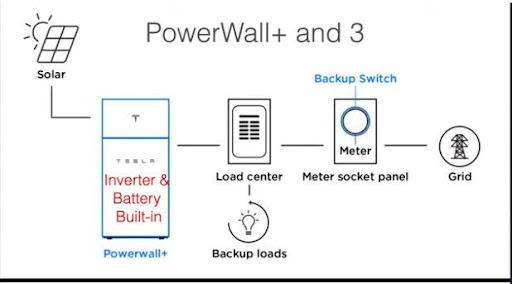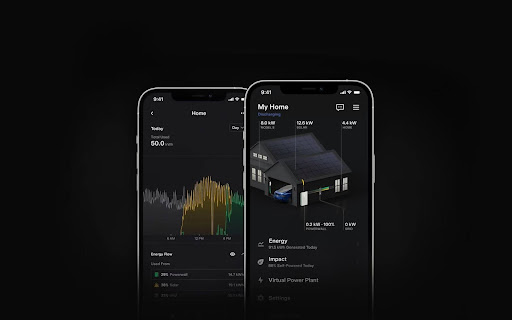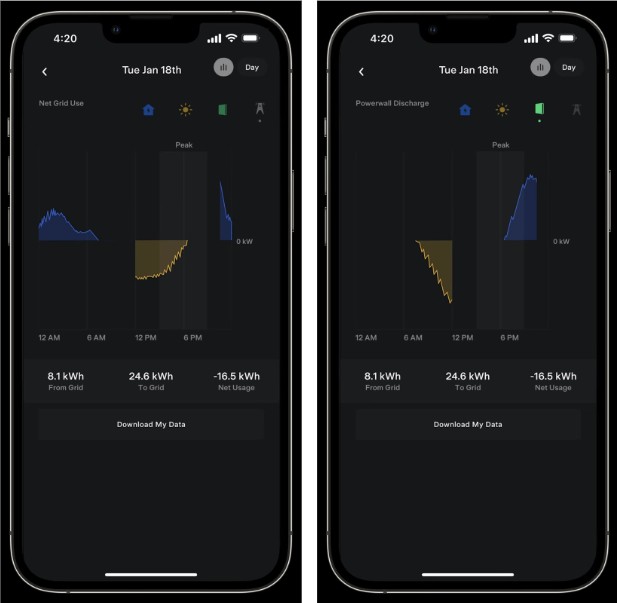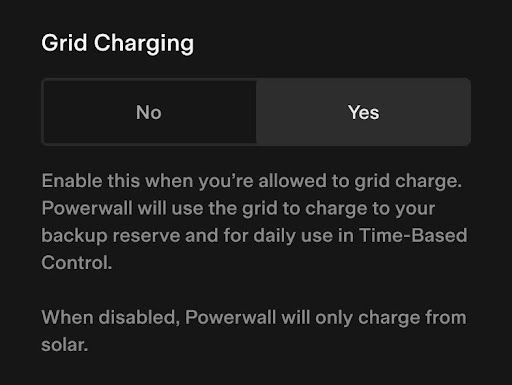Tesla Powerwall 3

What is the Tesla Powerwall 3?
How Does the Powerwall 3 Function and Benefit Homeowners??
The Tesla Powerwall 3 offers several key benefits for homeowners. It stores excess solar energy generated during the day, ensuring that when the grid goes down, the power stays on. This backup protection means you can have whole-home backup power during an outage, maintaining energy independence by producing energy with solar.
The stored energy can be used during peak hours when electricity prices are high or when the solar system isn’t producing enough power, such as at night or during cloudy days. Additionally, the Powerwall 3 can recharge from the grid when utility prices are low, allowing you to save on utility bills.
What Can You Power With a Tesla Powerwall 3?
However, it’s important to note that while the Powerwall 3 can handle larger loads, it doesn’t necessarily support them for extended periods. You’ll need to monitor battery life, especially when running high-demand appliances like dryers and air conditioners simultaneously, as the Powerwall 3 has the same battery capacity as the Powerwall 2 and Powerwall.
For larger homes with multiple heat pumps, a pool, or a need to power large appliances for longer durations, one Powerwall 3 may only provide partial backup. To determine the optimal number of Powerwalls for your home, it’s essential to review your average energy usage and discuss your specific needs for battery storage.
How Is the Powerwall 3 Designed and Installed?
How Does the Powerwall 3 Compare to the Powerwall 2?
Let’s examine some aspects related to the battery’s performance, focusing on how effectively and efficiently it supplies electricity to your home.
- Power Output: The Powerwall 3 offers a continuous power output of 11.5 kW and a peak power rating of 15 kW, compared to the Powerwall 2’s 5 kW continuous and 7 kW peak output. This allows the Powerwall 3 to handle more significant surges and power higher-demand appliances.
- Integrated Inverter and Solar Compatibility: Unlike the Powerwall 2, which requires a separate inverter, the Powerwall 3 includes a built-in solar inverter. This integration allows for direct connection with solar panels, reducing installation complexity and cost.
- Battery and Scalability: The Powerwall 3 features DC-coupled battery expansion units, enabling homeowners to increase storage capacity gradually. Beginning in 2025, the system will support up to 16 units (including 4 Powerwall 3s and 12 expansion units).
- Bidirectional Charging: The Powerwall 3 supports bidirectional charging, though this feature is not yet enabled in Australia. This capability allows the battery to both charge from the grid and send power back to the grid.
- Battery Chemistry: Tesla has transitioned from using Lithium Nickel Manganese Cobalt Oxide (NMC) in Powerwall 2 to Lithium Iron Phosphate (LFP) in Powerwall 3 which generally lasts between 10 to 15 years, depending on usage patterns, charge cycles, and maintenance. On the other hand, LFP batteries typically have a lower energy density.
| Category | Powerwall 2 | Powerwall 3 |
| Capacity | 13.5kWh | 13.5kWh |
| How Many Can I Install? | Up to 10 units (135kWh) | Up to 4 units (54kWh) |
| Round-Trip Efficiency | 90% | 97.5% |
| Depth of Discharge | 100% | 100% |
| Continuous Power Output | 5kW (charge and discharge) | 11.04 kW (5kW charge & 11.04 kW discharge) |
| AC or DC Coupled | AC only | Options for Both |
| Battery | Lithium Nickel Manganese Cobalt Oxide (NMC) | Lithium Iron Phosphate (LFP) |

Here's a breakdown of the components shown:
- Solar: Solar panels generate DC electricity from sunlight.
- Powerwall 3: This unit contains both the inverter and the battery. The inverter converts the DC power from the solar panels into AC power for home use.
- Load Center: The converted AC power is distributed to power home appliances.
- Backup Loads: Powerwall can provide electricity to selected backup loads during an outage.
- Metre Socket Panel: This component measures electricity usage.
- Grid: The system can interact with the grid, either feeding excess energy back or drawing power when solar production is insufficient.
What Are the Key Features and Specifications of the Powerwall 3?
The Tesla Powerwall 3 comes with several key features and specifications that set it apart from its predecessor:
- Integrated Solar Inverter: A substantial feature of the Powerwall 3 is its built-in solar inverter, which can directly integrate with up to 20 kW of DC solar input.
- Energy Capacity: The Powerwall 3 offers a storage capacity of 13.5 kWh, the same as its predecessor. This capacity allows homeowners to store excess solar energy generated during the day for use at night or during outages.
- Power Output: One of the significant upgrades in the Powerwall 3 is its continuous discharge power output of 11.5 kW, more than twice the 5 kW capacity of the Powerwall 2. This increase allows it to handle larger appliances and higher energy demands, making it an excellent option for households with significant energy needs.
- Round-trip Efficiency: The Powerwall 3 offers high efficiency, with a solar-to-home/grid efficiency of 97.5%. It optimises stored energy based on usage history, weather forecasts, and utility price estimates, ensuring efficient energy use and cost savings.
- Battery Chemistry: The Lithium Iron Phosphate (LFP) in Powerwall 3 is known for its longer life, stability, and safety. Even when punctured, subjected to significant compression, or dropped from a height, it does not ignite or explode. At most, it may release smoke.
How Much Does a Powerwall 3 Cost?
The Tesla Powerwall 3’s price includes the 13.5 kWh battery with an integrated inverter, costing slightly more than the Powerall 2. The Tesla Powerwall prices include GST but do not cover delivery, installation, or additional fees. Contact us to determine the final cost of installing a PW3.
The return on investment (ROI) for Powerwall 3 depends on factors like initial costs, potential savings on utility bills, and the ability to sell excess energy back to the grid. Its high efficiency and optimization features can lead to significant energy cost savings over time, making it a worthwhile investment for homeowners looking to maximise their solar energy use.
Why Should You Choose Powerwall 3 Over Other Residential Battery Systems?
Choosing between the Powerwall 3 and other residential battery systems depends on individual circumstances and needs. We have some examples below but recommend speaking to the team at Select Electrical before making any decisions. Here are some scenarios to consider:
If You Don’t Have Solar or Battery Storage Yet
The Powerwall 3 is a solid choice due to its integrated hybrid inverter, simplifying installation and offering advanced technology.
If You Already Have Solar But No Battery
The Powerwall 2 is a viable option for immediate savings and blackout protection. However, if you’re willing to wait and pay extra, the Powerwall 3 offers more power and advanced features.
If You Already Have Powerwall 2 Installed
Currently, the Powerwall 3 is not compatible with existing Powerwall 2 systems. If you’re looking to expand your storage capacity, it’s important to note that adding a Powerwall 3 to your current setup won’t be possible. You can consider installing another Powerwall 2 to increase your storage, especially if you want to ensure continuity with your existing system.
However, if you’re planning a new installation or future-proofing your home energy system, investing in a Powerwall 3 might be the better option because of its advanced features and higher performance.
How Much Does a Powerwall 3 Cost?
The Tesla Powerwall 3’s price includes the 13.5 kWh battery with an integrated inverter, costing slightly more than the Powerall 2. The Tesla Powerwall prices include GST but do not cover delivery, installation, or additional fees. Contact us to determine the final cost of installing a PW3.
The return on investment (ROI) for Powerwall 3 depends on factors like initial costs, potential savings on utility bills, and the ability to sell excess energy back to the grid. Its high efficiency and optimization features can lead to significant energy cost savings over time, making it a worthwhile investment for homeowners looking to maximise their solar energy use.
FAQs About Powerwall 3
1. Is the Powerwall 3 available to order now?
Yes, we have the Powerwall 3 in our inventory. Contact our team to discuss availability and ensure a unit can be allocated for your home energy needs.
2. Can Powerwall 3 be added to Powerwall 2?
3. What is the warranty period?
Tesla offers a 10-year warranty for the Powerwall 3, the same as the Powerwall 2.
4. What does the warranty cover?
The warranty covers an end-of-warranty capacity guarantee of 70%, which means that after 10 years, the battery is expected to retain at least 70% of its initial capacity. While a 10-year warranty is the industry standard for solar batteries, Tesla distinguishes itself by offering unlimited cycle coverage.
Most manufacturers limit their warranty based on a specific number of cycles, meaning the warranty could end if the cycle limit is exceeded, even if it’s still within the period.
Tesla’s unlimited cycle coverage ensures that you can fully utilise the battery’s charge and discharge cycles without worrying about voiding the warranty. This aspect is particularly significant as it allows for greater flexibility and usage intensity without compromising the warranty coverage.
5. Can it be added to my existing solar system?
Yes, Powerwall 3 can be AC coupled and is compatible with all major solar inverter brands and can support various existing solar systems.
6. Am I eligible for STCs if I invest in Powerwall 3?
Eligibility for Small-scale Technology Certificates (STCs) may depend on your location and specific installation. It is advisable to consult us for accurate information.
7. Should I replace my current battery with the Powerwall 3?
Replacing your current battery with the Powerwall 3 depends on your energy needs and the condition of your existing system. If your current battery system is not meeting your needs or looking to upgrade for higher power output and integration with solar panels, the Powerwall 3 could be a worthwhile investment.
8. Can a Powerwall 3 run a heat pump or air conditioner?
It depends on the specific ratings of your heat pump or air conditioner. Generally, the more efficient your unit is, the more likely it can be powered by a Powerwall 3. To determine compatibility, it’s best to consult us for guidance on whether a Powerwall 3 can effectively run your heat pump or air conditioner.
9. Can you stack Powerwall 3?
Yes, Powerwall 3 can be stacked, and this is commonly done. If you plan to power an entire home, you may need to install two or three Powerwall 3 to meet your energy needs.
10. How long does a Powerwall 3 battery last on one charge?
The duration a Powerwall 3 battery lasts on a single charge depends on several factors, such as the size of your home, the size of your solar system, the number of heat pumps, whether you need EV charging, the number of occupants, and overall energy usage. These variables significantly affect how long your Powerwall can provide power. The best way to get an accurate estimate is to consult us so we can develop a custom energy plan tailored to your home’s specific needs.
How the Tesla Mobile App Works with Powerwall 3
Key features include:
- Real-Time Monitoring: Users can see the current status of their Powerwall, including the amount of energy being generated by solar panels, how much is being stored in the battery, and how much is being used by the home.

More details here: Monitoring Your Powerwall 3 System
How the Tesla Mobile App Works with Powerwall 3
- Customisable Settings: The app enables users to customise the Powerwall’s operation to meet their specific needs. This includes setting a backup reserve for power outages, choosing when to use stored energy to maximise savings, forecasting solar production, and configuring ‘Time-Based Control’ to take advantage of variable electricity rates.
During the summer, high solar production allows the Powerwall 3 to prioritise charging from solar energy during off-peak hours. This process reduces the need to draw electricity from the grid during peak periods.
|
In the morning, the Powerwall charges using solar energy, ensuring it has enough stored power to offset consumption during the evening. |
During peak usage times, the Powerwall discharges to power the home, using stored solar energy to meet household needs and minimise grid reliance. |

More details here: Time-Based Control User Guide

- Energy Exports and Other Advanced Settings: The Tesla app offers advanced settings that allow users to control how the Powerwall 3 interacts with the grid. Options like ‘Energy Exports’ let users send excess solar energy back to the grid to earn credits during high-cost periods. Additionally, settings for ‘Grid Charging’ and ‘Preconditioning’ help optimise battery performance and manage energy use effectively.
When set to ‘Solar,’ your Powerwall will only discharge stored energy to meet your home’s consumption needs when energy prices are high. This setting is ideal if you want to earn credits while preserving stored energy in your Powerwall to reduce dependence on the grid.
When set to ‘Everything,’ both solar and Powerwall energy will be sent to the grid, and your Powerwall will continue discharging until it reaches your designated Backup Reserve. This option is best for maximising savings.

Powerwall can be set to charge from the grid under certain conditions. This setting will be configured by us.
More details here: Powerwall 3 Advanced Settings
These features offer homeowners the flexibility to manage their energy system directly from their smartphone. For detailed information on how the Powerwall 3 functions with the Tesla app, the company offers guides and support materials on their website.
